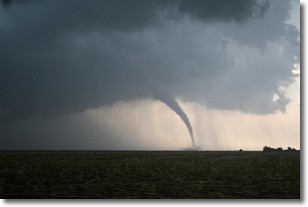Weather Alert in Texas
Flood Warning issued July 14 at 11:48AM CDT until July 15 at 4:22PM CDT by NWS Austin/San Antonio TX
AREAS AFFECTED: Uvalde, TX
DESCRIPTION: ...The Flood Warning is extended for the following rivers in Texas... Frio River Below Dry Frio affecting Uvalde County. * WHAT...Major flooding is forecast. * WHERE...Frio River below Dry Frio. * WHEN...From this afternoon to tomorrow afternoon. * IMPACTS...At 17.0 feet, Major flooding of crop and pastureland, traps livestock and can drown them. Secondary and primary roads and low bridges are flooded and dangerous. * ADDITIONAL DETAILS... - At 10:30 AM CDT Monday the stage was 1.4 feet. - Bankfull stage is 10.0 feet. - Forecast...The river is expected to rise above flood stage late this afternoon to a crest of 17.7 feet this evening. It will then fall below flood stage late tonight. - Flood stage is 12.0 feet. - Flood History...This crest compares to a previous crest of 17.8 feet on 09/21/1995. - http://www.weather.gov/safety/flood
INSTRUCTION: Caution is urged when walking near riverbanks. Flooding is occurring or is imminent. Most flood related deaths occur in automobiles. Do not attempt to cross water covered bridges, dips, or low water crossings. Never try to cross a flowing stream, even a small one, on foot. To escape rising water find another route over higher ground. To escape rising water, take the shortest path to higher ground. Please report observed flooding to local emergency services or law enforcement and request they pass this information to the National Weather Service when you can do so safely. Turn around, don't drown when encountering flooded roads. Most flood deaths occur in vehicles. Additional information is available at www.weather.gov. The next statement will be issued Tuesday morning by 600 AM CDT.
Want more detail? Get the Complete 7 Day and Night Detailed Forecast!
Current U.S. National Radar--Current
The Current National Weather Radar is shown below with a UTC Time (subtract 5 hours from UTC to get Eastern Time).

National Weather Forecast--Current
The Current National Weather Forecast and National Weather Map are shown below.

National Weather Forecast for Tomorrow
Tomorrow National Weather Forecast and Tomorrow National Weather Map are show below.

North America Water Vapor (Moisture)
This map shows recent moisture content over North America. Bright and colored areas show high moisture (ie, clouds); brown indicates very little moisture present; black indicates no moisture.

Weather Topic: What are Stratocumulus Clouds?
Home - Education - Cloud Types - Stratocumulus Clouds
 Next Topic: Stratus Clouds
Next Topic: Stratus Clouds
Stratocumulus clouds are similar to altocumulus clouds in their
fluffy appearance, but have a slightly darker shade due to their additional mass.
A good way to distinguish the two cloud types is to hold your hand out and measure
the size of an individual cloud; if it is the size of your thumb it is generally
an altocumulus cloud, if it is the size of your hand it is generally a
stratocumulus cloud.
It is uncommon for stratocumulus clouds to produce precipitation, but if they do
it is usually a light rain or snow.
Next Topic: Stratus Clouds
Weather Topic: What are Wall Clouds?
Home - Education - Cloud Types - Wall Clouds
 Next Topic: Altocumulus Clouds
Next Topic: Altocumulus Clouds
A wall cloud forms underneath the base of a cumulonimbus cloud,
and can be a hotbed for deadly tornadoes.
Wall clouds are formed by air flowing into the cumulonimbus clouds, which can
result in the wall cloud descending from the base of the cumulonimbus cloud, or
rising fractus clouds which join to the base of the storm cloud as the wall cloud
takes shape.
Wall clouds can be very large, and in the Northern Hemisphere they generally
form at the southern edge of cumulonimbus clouds.
Next Topic: Altocumulus Clouds
Current conditions powered by WeatherAPI.com




